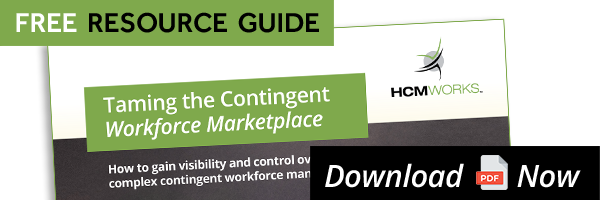Your employees are your company’s most valuable yet most expensive asset. Your workforce management processes must be efficient in order to control costs and drive productivity and business growth. If your processes aren’t all that they could be and more, you could be making workforce management mistakes that can cost your company in higher costs, lower productivity, increased risks and liabilities, and reduced profits. It’s critical that you learn to manage your workforce—both your employees and contractors—in the most streamlined and strategic way possible.
Here are five workforce management mistakes we sure hope you’re not currently making.
1. Managing Contingent Workers like Employees
Under the U.S. labor laws, your contingent workers are not equal to your permanent, core employees. And as such, they cannot be managed in the same way, using the same workforce management processes and procedures.
You cannot control their work financially or behaviorally in the same way, provide them with the same tools and equipment, pay them equally, provide them with the same perks, incentives, and benefits, or even train them for their duties and responsibilities as you would your permanent workers. Doing so will just put you at an increased risk of worker misclassification, which can cost you in significant fines and penalties.
To properly manage contingent workers, you must first know what differentiates them from your employees and work within the law. Crossing that line, even when well intentioned, could create legal pitfalls. Even if you and the independent contractor have agreed to the label in a written contract, courts and tribunals could still make their own opposed determination during an audit. You must adjust your management style for contingent workers.
2. Failing to Document
You need to protect your company from legal issues. Failing to document can significantly hurt your case if a legal battle arises. Whether it’s health and safety training to avoid workplace injury lawsuits, keeping signed timesheets to avoid arguments of unpaid overtime, or anything else, you should be document all of your procedures and activities to protect your company from disgruntled workers or from the consequences of government audits. Failure to do so can put you on the losing end in the courtroom.
3. Managing Your Workforce Manually
In this day and age, there’s no reason to be managing your workforce manually. This leads to a waste of time and an increase in costs and errors, which can hurt your company’s competitiveness in the market. Manual workforce management just isn’t efficient. Automation is required.
There are many software programs on the market that can streamline the way you input, store, access, and review data. A great software program will allow for integrated data storage that speaks to the other programs that you use. For example, your scheduling software should work with your time tracking software, which should be easily integrated with your payroll system. This will allow for greater accuracy and efficiency. Automation will also allow for lowered labor costs, ensure compliance, provide insight into performance, and speed up processes. It’s time to ditch the spreadsheets, disjointed workforce management efforts, and invest in integration technology.
4. Making Decisions Based on Intuition
Making recruitment and other workforce decisions based on intuition will lead to myriad problems. You need to be gathering and using big data instead. With accurate, real-time information, you can make more informed, data-driven decisions about your employees and contingent workers that will lead to better results. The right software can give you the insights you need to manage your workforce in a smarter way.
5. Not Asking for Help When It’s Needed
Managers are often reluctant to ask for help with workforce management. Doing so may make them feel like they are failing at their jobs, when in fact, it shows that they have enough sense and logic to do what’s best for their organization—sometimes seeking workforce management consultation services is the best option.



